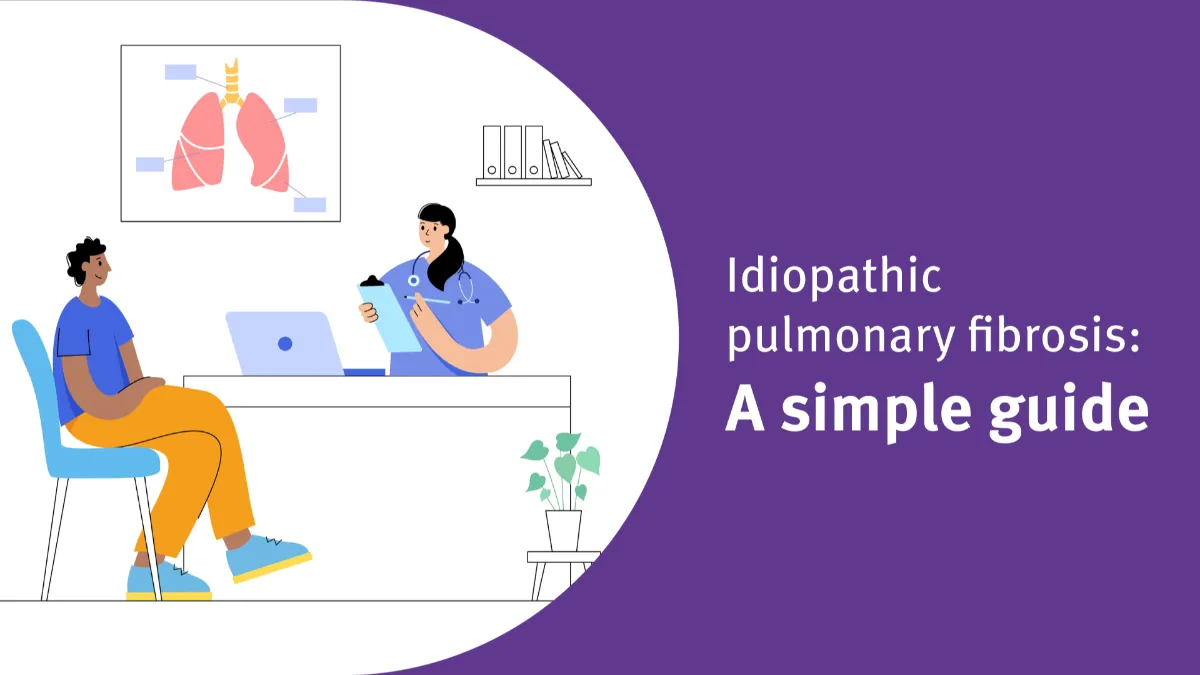Idiopathic pulmonary fibrosis: A simple guide

Idiopathic pulmonary fibrosis (IPF) is a critical lung disease that causes scar tissue to form in the lungs, creating difficulty breathing and worsening over time. Currently, there isn’t a cure for IPF. However, an early diagnosis allows for an effective treatment plan to slow the disease process.
What is IPF? #
IPF causes scar tissue to grow and build up in the lungs. Not only does it make breathing more difficult, but it also slows down oxygen from traveling through the blood to the rest of the body.
IPF presents similar to other common lung diseases and includes:
- Shortness of breath
- Persistent, dry cough
- Fatigue
- Loss of appetite
- Weight loss
- Clubbed fingers (rounded and swollen fingertips)
- Leg swelling
- Chest tightness or pain
IPF continues to worsen with time, causing irreversible lung damage. Patients with IPF are at risk for severe and sometimes fatal exacerbations, which can occur anytime during the disease course.
How common is IPF? #
IPF affects about 3 million people worldwide. Most patients diagnosed with this disease are over 50 years old, and more men than women are affected.
What causes IPF? #
The cause of IPF remains unknown. However, several risk factors may lead to this disease. These include:
- Smoking
- Lung injuries
- Family history of IPF
- Abnormal acid reflux
- Environmental exposures
- Chronic viral infections
How is IPF diagnosed? #
IPF presents similar to other common lung diseases like COPD and asthma, making diagnosing IPF more difficult. Doctors often rule out other lung diseases before making an IPF diagnosis.
As an initial assessment, doctors usually assess patients’ breath sounds, pulse oximetry, and look for clubbed fingers and other physical signs and symptoms of IPF. In some cases, they’ll order an arterial blood gas, a blood test that measures the amount of carbon dioxide and oxygen in arterial blood.
After an initial assessment, physicians may order lung function testing, chest x-rays, CT scans, bronchoscopies, and lung biopsies to determine whether a patient has IPF.
Lung function testing #
Lung function testing, also called pulmonary function testing (PFT), is a crucial component of diagnosing IPF. PFTs determine how quickly a patient moves air in and out of the lungs, how much air the lungs can hold, and how the lungs are exchanging oxygen and carbon dioxide. DLCO, or diffusion capacity, is a valuable lung test to diagnose IPF. In fact, data shows reduced DLCO in 98 percent of IPF patients, even in patients with normal TLC and FEV1.
Once a patient receives an IPF diagnosis, the doctor can develop a treatment plan. In addition to medications, patients may need pulmonary rehabilitation, supplemental oxygen, cough management, and, if required, smoking cessation.
Without diagnosing and treating IPF, life expectancy is 3-5 years. Early diagnosis of IPF leads to early treatment, potentially improving long-term outcomes.
Clinical statements above come from these sources:
https://www.ahajournals.org/doi/full/10.1161/JAHA.119.013310
https://pubmed.ncbi.nlm.nih.gov/23204124/
https://err.ersjournals.com/content/errev/27/147/170062.full.pdf

